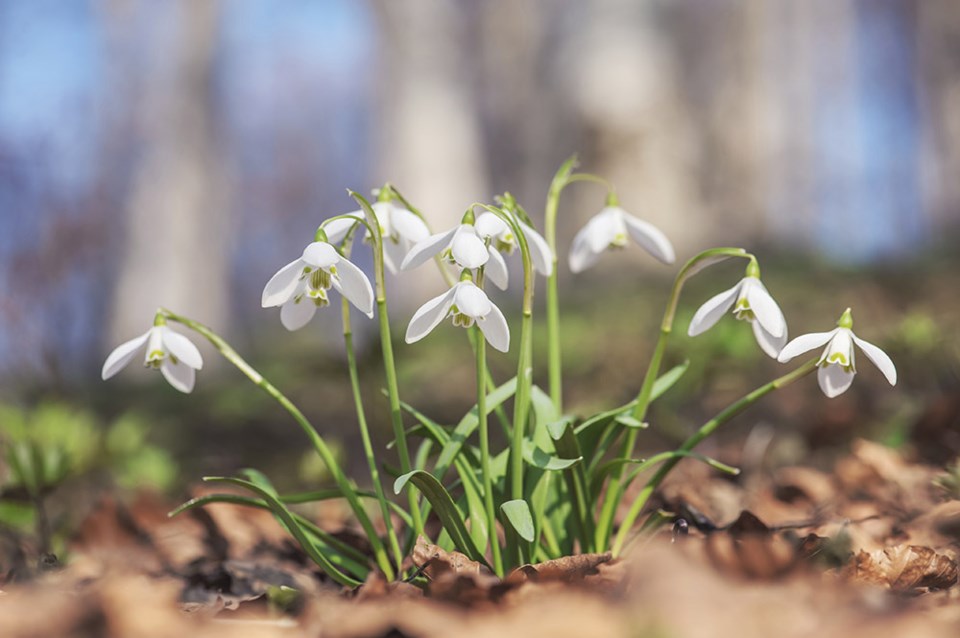When the weather's too wet or cold for gardening, strolling around a nursery is a great adventure into the colour and/or fragrance some plants could add to your own garden.
Winter Jasmine, for instance is covered with yellow flowers by the time the new year rolls around – even if it's been planted in terrible soil on a north wall and never sees the sun.
This easy, sprawling shrub does well in containers, too, though you need to keep it compact by pruning the side branches down to two or three buds after flowering.
In the outside garden this jasmine (Jasminium nudiflorum) hugs the ground and roots wherever it touches.
Other January shrubs include the pink fragrant flowers of Viburnum bodnantense "Dawn." This usually flowers December to March, produces red berries in summer and red-purple-tinged leaves in fall. As it gets older, one or two oldest trunks should be cut to the ground after flowering so that vigorous new trunks can form.
Another is the Winter Honeysuckle (Lonicera fragmantissima) which in mild Januaries opens up small white clusters of beautifully scented flowers. It's not a shapely bush – branches extend far and wide and need pruning each year. But it does make a nice support for annual climbers such as sweet peas.
For big splashes of winter colour, witch-hazels are a well-loved tree. A few of the yellow-flowered kinds are very fragrant (this includes "Arnold's Promise" and "Pallida".) But the coppery-red flowered "Diane" offers bright red leaves in fall. Leaves of the yellow flowered witch-hazels are usually bright yellow.
At ground level, Gaultheria procumbens (the native Wintergreen) blankets the ground with pungently-scented green leaves and long-lasting red berries. It's a nice ground cover about 15 centimetres tall with shallow roots that spread fast but are easy to pull up. It grows well in containers.
Snowdrops make their appearance shortly after new year's, depending on the weather. Pots of snowdrops are often sold in garden centres and some gardeners like to take them home, enjoy them then plant them outside hoping to start a colony.
Hyacinths in pots can be removed from them when flowers fade and established in the garden. These do better in shady or semi-shady situations. Planted outside, hyacinths can flower every spring for many years.
Helleborus plants should be displayed in garden centres very soon. Some are very like the true white-flowered Christmas Rose (Helleborus niger), but plant breeders have achieved different characteristics within this group. For instance "Jacob" has reddish stems, is very dwarf and flowers in late fall, 'Pink Frost' has white and pink buds followed by pale pink flowers.
Hybrids of Helleborus orientalis have morphed in all directions: there are doubles, semi-doubles, picotees, red, yellow or pink petals and some purples that are approaching black. In some helleborus plants, black nectaries (the ring around the flower's centre) are a feature. Leaves are also varying – some are veined or mottled.
In early January, callicarpa bushes may be displayed. The variety "Profusion" is especially rich in autumn with intensely purple berry clusters. The compact bushes of skimmia with fragrant flowers, bright red berries and evergreen leaves is popular in spaces where a year round presence is wanted.
Anne Marrison is happy to answer garden questions. Send them to her via [email protected] It helps me if you can add the name of your city or region.



